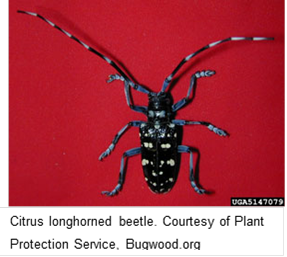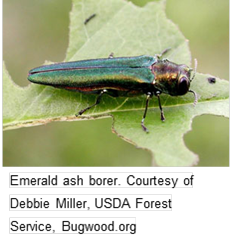Submitted by State of Washington Recreation and Conservation Office
The Washington Invasive Species Council is asking residents to check trees and swimming pools in their yards for harmful bugs as part of the national Tree Check Month in August.
August is the peak time of year to look for invasive bugs and report any species that seem out of place. Trees near home and in neighborhoods, the “urban forest,” are as just as susceptible as trees in rural and wild forests.
Since 1990, at least 70 new insect species have been newly detected in Washington, according to a state study. The public found 36 percent of the new insects first, more than formal surveys or regulatory agencies detected.
“This just highlights the importance of reporting any species that you suspect might be a problem,” said Justin Bush, executive coordinator of the Washington Invasive Species Council. “Researchers and scientists are surveying for these species statewide, but we need the public’s help. By taking a few minutes of your time, you could help the state prevent and control the spread of invasive species, which pose a $1.3 billion threat to Washington’s economy every year and put our environment and human health at risk.”
In addition to inspecting trees, experts also suggest that all pool owners check their pool skimmers and filters for invasive bugs. Emerging adult insects often end up as debris collected in pool filters. On the East Coast, pool owners detected invasive beetles in pools far before they were found in conventional pest survey traps.
Residents who see any invasive insects or signs of them, should take photographs and report the find immediately online at invasivespecies.wa.gov/report.shtml, where they can access the reporting form or download the free WA Invasives mobile app. If the insect can be captured or collected, each county has a Washington State University Extension Office and Master Gardener Program that can help identify suspect insects.
First indications of invasive insect damage to trees include sudden dieback or death among trees that are otherwise vigorous and healthy. If residents see this, they should investigate further and look for sawdust, exit holes or actual beetles. They might help find one of these invasive species:

The citrus longhorned beetle, a close relative of the infamous invasive Asian longhorned beetle is a large shiny black beetle with white spots. At this time of year, adult beetles emerge from trees, leaving large, circular exit holes about fifth-eighth inch in diameter. The beetle can feed on and kill a variety of hardwood trees including apple, maples, oaks, willows and poplars. Washington has a number of look-alike native beetles and it takes a trained eye to distinguish them, so residents are asked to provide any suspect beetles to one of the agencies mentioned above. In 2001 this species was detected in Tukwila and was eradicated successfully in a cooperative effort between the Washington State Department of Agriculture, U.S. Department of Agriculture and others.

The emerald ash borer is a shiny, half-inch long, metallic green beetle. Adults begin flying in June and will continue through August as they emerge from ash trees, their primary host. The exit holes in the tree’s trunk are about a quarter-inch wide and have a distinctive D-shape. This species has been moving westward as campers move firewood far from where they bought it and is known to be as far west as Boulder, Colorado.
Spotted lanternfly were first found in North America in Pennsylvania in 2014. The insect was able to quickly spread throughout the state and since has been detected in Delaware, New Jersey, New York and Virginia. The insect has the potential to greatly impact agricultural crops such as apples, grapes, hopes, walnut and more. Adults are about an inch long, with distinct black spots on light brown or gray wings. Their hind wings have a distinct red and black pattern. Nymphs are black at first, with bright white spots and become red as they age. Eggs masses look a bit like a smear of light-colored clay and can be found on outdoor furniture, cars, trains and plants.

While the three insects listed above are not known to be in Washington, they have the potential to spread by way of contaminated firewood, shipping and moving, and hitchhiking on trucks, planes and passenger vehicles.
“The possible pathways for moving invasive species are endless and it is likely that at some point invasive insects will slip into Washington,” Bush said. “It’s key that we find new invasive species as quickly as possible so that the threat can be contained and addressed so that it does not establish and cause long-lasting impacts.”
Created by the legislature in 2006, the Washington Invasive Species Council is tasked with providing policy level direction, planning and coordination for combating harmful invasive species throughout the state and preventing the introduction of others that may be potentially harmful. For more information about invasive species, and ways to keep them from spreading, visit invasivespecies.wa.gov.
















































